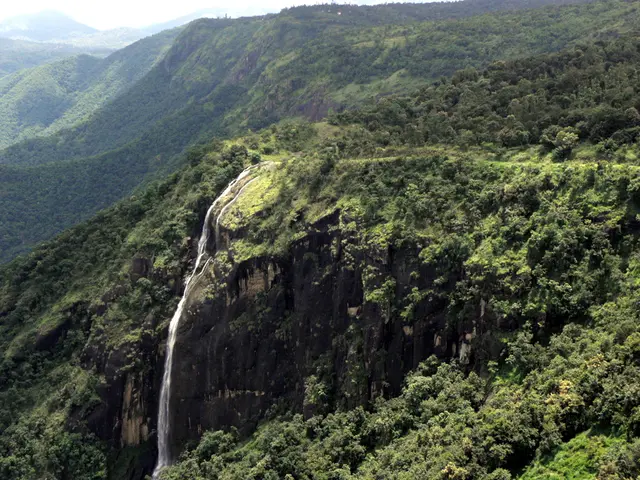Working with Watercolours: Techniques and Methods
In the realm of watercolour painting, understanding the techniques and selecting the right materials is crucial for creating captivating artworks. From the classic wet-on-wet technique to the modern mixed media approach, here's a guide to help both beginners and professionals navigate the world of watercolour painting.
One of the most essential elements in watercolour painting is the paper. Professionals often opt for 100% cotton paper, renowned for its superior absorption, strength, and archival quality, which prevents warping and deterioration over time. The weight of the paper also plays a significant role, with a versatile range of around 140lb/300gsm being suitable for most techniques. Heavier options, such as 300lb/640gsm, provide extra durability for very wet applications or heavy washes.
The texture of the paper is another crucial factor. There are three main textures: cold-pressed (NOT), which offers a medium texture that handles detail and washes well; hot-pressed, very smooth, ideal for fine detail and delicate linework; and rough, which has a strong texture for expressive techniques and granulation effects.
Leading professional brands like Arches, Saunders Waterford, Fabriano, Bockingford, Clairefontaine, and Winsor & Newton offer watercolour papers in different textures and weights suitable for serious artists. Fabriano, for instance, provides hand-made and mould-made papers known for fine art quality and sustainability, catering to a wide range of watercolor techniques and surface preferences.
Beyond the traditional techniques, there are various ways to push the boundaries of watercolour painting. Mixed media with watercolours allows artists to explore new ways of self-expression, incorporating elements such as collage or ink outlines to conceal mistakes or enhance certain areas within a painting.
Ink or pen can be used alongside watercolours to add fine details or outlines to a painting, enhancing the overall composition. Opaque white gouache or acrylic paint can be used as an overpainting medium to cover up mistakes or add highlights.
Understanding watercolour techniques such as washes, wet-on-wet, dry brush, lifting, masking fluid, and resists is essential for mastering the art of watercolour painting. Lifting off excess pigment using a clean damp brush or sponge is a technique for correcting mistakes, while masking fluid and resists are valuable tools that allow artists to preserve areas of white paper while painting over other areas with watercolour.
Incorporating mixed media elements, such as collage or ink outlines, can help conceal mistakes or enhance certain areas within a watercolour painting. Creating texture and depth can be achieved through techniques like salt texture, masking fluid, layering, and glazing.
With these techniques and materials in mind, artists can embark on their watercolour journey, exploring new ways to express themselves and create beautiful, unique artworks.
- Inspired by the realms of fashion and beauty, some artists experiment with incorporating accessories or embellishments into their watercolor paintings, adding an element of style and intrigue.
- Food and drink have often found their way into art through various mediums, and watercolor artists can capture the essence of a scrumptious dish or exotic beverage in their compositions.
- For those who prefer the comforts of home, watercolors offer a perfect medium to capture the natural beauty of a garden or a cozy nook in a room, fitting perfectly in home-and-garden themed art collections.
- In the technological world, artificial intelligence and machine learning technologies could potentially revolutionize the art world by automating the process of watercolor paints-matching or even generating unique, configurable artworks-depending on the user's preferences.
- Travel enthusiasts can use watercolor paintings as a creative outlet to document their adventures, capturing vibrant landscapes, unique architecture, and rich cultural scenes in a way that is personal, expressive, and forever lasting.
- To expand one's knowledge, books on watercolor techniques and art theory can serve as a precious guide for both budding artists and seasoned painters who wish to learn and grow in their passion.
- For entertainment, many online platforms offer tutorials and workshops led by renowned artists, enabling artists to learn, practice, and share their creations with a global community.




